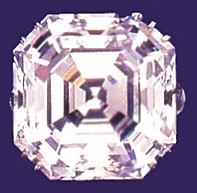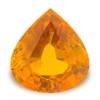Porter Rhodes,

The diamond was originated in Kimberly mine and gets its name from the American diamond prospector "Porter Rhodes". It was discovered in February, 1880. When found, the rough stone was weighing 153.50 carats and valued at 200,000 sterling pounds.
Nature of the stone :
The fabulous gem is absolutely colorless and flawless with the weight of 54.04 carats. The enhanced elegance of this stone is provided by a beautiful assert cut. The factors that cause abnormalities in diamonds are absent in this D-colored stone. Therefore, it is a chemically pure and structurally perfect stone. Being colorless, it falls under the category of type II diamond, which is absolutely free from nitrogen, boron and hydrogen impurities. These stones are extremely hard diamonds and cannot be cut by employing simple laser cutting technique.
History of origin :
In 1880, the stone was earthed from the Kimberly mine, owned by Mr. Porter Rhodes. With the intention of finding Royal customer for his exceptional stone, he left Kimberly and settled in London. In 1881, the stone was exhibited in Bond Street. The uncut diamond was later faceted and sold to renowned jewelry firm Jerrod and Ward of London. Later, it was further re-cut to 56.60 carats, assert cut diamond. The Emperor of Indore acquired this priceless stone from the jewelry firm in London. In 1930, Emperor of Indore disposed the porter diamond to the second duke of Westminster. After few hands change, the stone was brought under the control of influential American family, where it remained for three decades. In the year 1987, this amazing stone was purchased by Laurence Graff, the founder of world's renowned diamond jewelry manufacturing company, Graff diamonds of London. He re-cut the stone to its present weight and mounted it on a platinum ring. This exquisite piece of jewelry is adorning Graff till date.
NOVEMBER BIRTHSTONE - CITRINE

COMMEMORATIVE EVENT - 13th Anniversary
KEYWORDS - Success, Abundance, Personal Power
ALSO KNOWN AS - Merchant's stone, Success stone
COLORS - Pale yellow to brown
OCCURRENCE - Brazil
COLOR ZONING - Tiger stripes or Zebra stripes


